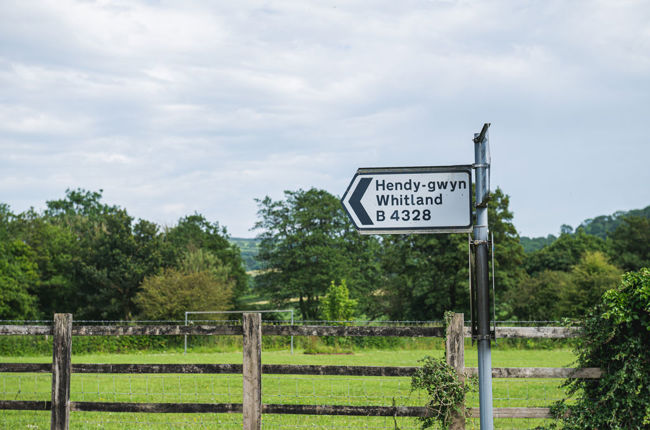The technical guidance below is for local authority officers, housing developers and others who are practically engaged in the field of place-names in Wales.
Naming new developments
Deciding on a name for a new development can provide an excellent opportunity to resurrect and preserve old historical and traditional names that can reveal something special about the landscape or the history and identity of a place.
The List of Historic Place Names is a great place to start searching for information and inspiration of historical names that could be used. You could also contact the RCAHMW’s officers responsible for maintaining this list to ask for guidance on relevant names by using the query form on their website.
It should be emphasised that the forms found on the List of Historic Place Names are not necessarily standardised. Once you have found a name for a new development, you can contact us for guidance on the correct modern spelling.

Signs containing place-names
When designing signage which includes place-names, especially signs welcoming people to a town or village, care should be taken when considering the form that appears on the sign. In Welsh, phrases such as ‘Croeso i...’ (Welcome to...) may cause a lenition of the Welsh name which follows it and therefore may cause confusion, e.g. ‘Croeso i Gaernarfon’ or ‘Croeso i Lanelli’. It is expected that the radical form of a name is placed on signs; the radical forms in these examples would be ‘Caernarfon’ and ‘Llanelli’.
Similarly, if the Welsh definite article (Y/Yr) is part of a name, the full name is not always clearly communicated when the definite article is integrated to the preceding vowel, e.g. ‘Croeso i’r Bala’ or ‘Croeso i’r Bont-faen’. The radical forms in these examples are ‘Y Bala’ and ‘Y Bont-faen’. For road signs and other signs where the place-name is the main element of the sign, it is advised that the sign is designed with the phrase (such as ‘Croeso i…) appearing in a smaller font and the place-name itself placed on a separate line in its radical form. Another alternative is to omit the preposition ‘i’ altogether leaving a sign reading ‘Croeso’ (Welcome) preceded or followed by the place-name.
This problem may also be avoided by modifying the phrase that precedes the place-name. This can be done by using a phrase such as ‘Croeso i bentref...’ (Welcome to the village of...) or even adding a descriptive or promotional element to the phrase, ‘Croeso i dref hanesyddol...’ (Welcome to the historic town of...).
Note that the Welsh language standards contain specific requirements regarding the accuracy and position of Welsh text on signage. You may find the Welsh Government’s working drawings and guidelines for road signs on the Government’s website: Traffic signs: boundary signs.

